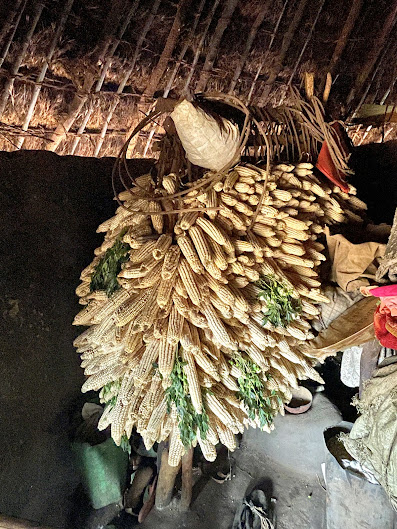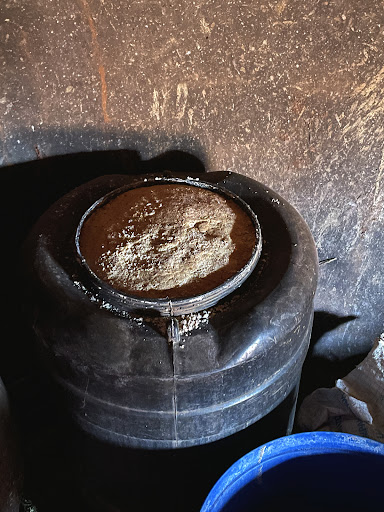Structure and Materials
The Karamojong manyattas are typically circular huts with walls constructed from a combination of mud, cow dung, and grass. The roofs are thatched, using layers of dried grass tied together and secured to a wooden frame. This method provides excellent insulation against both the scorching daytime heat and the cool nights characteristic of the semi-arid Karamoja region.
Interior Layout
Upon entering a Karamojong manyatta, one is immediately struck by the simplicity and functionality of the interior space. The huts are usually single-room structures, designed to accommodate various activities. The interior is organized to support daily living, social interactions, and storage of essential items.
Sleeping Area
One section of the hut is designated for sleeping. This area is often slightly elevated and covered with animal hides or mats woven from local grasses, providing a comfortable and hygienic sleeping surface.
Cooking Space
Another corner of the hut is reserved for cooking. A small fireplace, typically a circle of stones, serves as the cooking area. Wood or dried dung is used as fuel, and the smoke escapes through gaps in the thatched roof, serving to repel insects and preserve the structure.
Storage
Space within the hut is maximized for storage. Pots, calabashes, and gourds used for food and water storage are neatly arranged around the hut’s periphery. Personal items, such as clothing and tools, are stored in woven baskets or hung from the walls.
Functional and Cultural Elements
The interior of a Karamojong manyatta is not only about practicality but also cultural expression. Decorations are minimal but significant. For instance, the walls may feature intricate patterns drawn with natural pigments, reflecting the tribe’s artistic heritage. Additionally, personal and communal objects, such as ceremonial stools, weapons, and jewelry, are often displayed, signifying social status and cultural identity. The hearth, or fireplace, holds a central place in Karamojong homes. It is not just for cooking but is also a focal point for family gatherings and storytelling sessions. The warmth and light from the fire create a cozy atmosphere, fostering a sense of community and continuity of traditions.
Adaptation and Sustainability
The Karamojong’s home design is a testament to their adaptability and sustainable living practices. The materials used are locally sourced and biodegradable, ensuring minimal environmental impact. The construction techniques, honed over generations, enable quick repairs and modifications, essential for a nomadic lifestyle. Moreover, the circular design of the huts is an ingenious response to their environment. It enhances structural stability and wind resistance, crucial in the often harsh and unpredictable climate of Karamoja.
Conclusion
The interiors of Karamojong manyattas offer a window into the lives and values of this resilient community. Their homes are a harmonious blend of functionality, cultural identity, and environmental harmony. Exploring these spaces reveals much about the Karamojong’s resourcefulness, their deep-rooted traditions, and their ability to thrive in one of the most challenging regions of Uganda.




























No comments:
Post a Comment